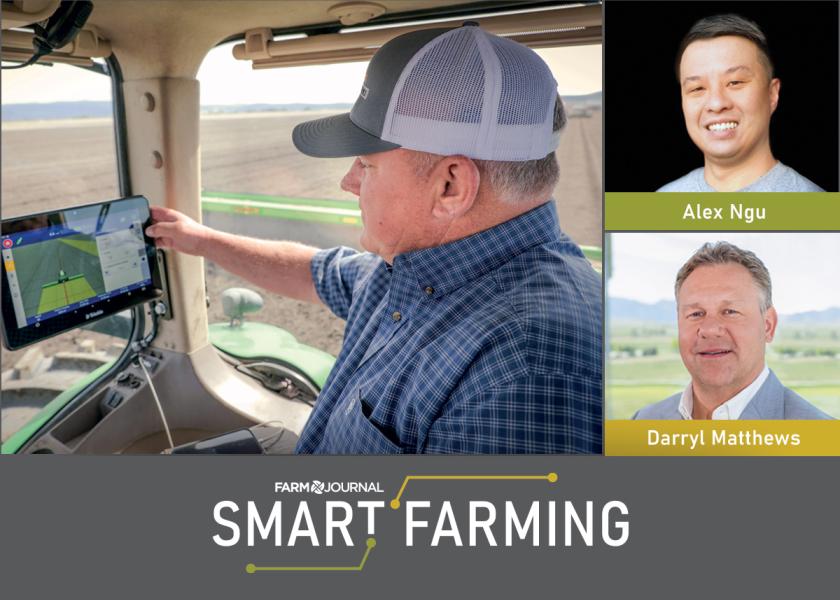Choose Wisely: Smart Strategies to Select the Right Corrections Service

Farm Journal’s Smart Farming Week is an annual week-long emphasis on innovation in agriculture. The goal is to encourage you to explore and prioritize the technology, tools and practices that will help you farm smarter. Innovation today ensures an efficient, productive and sustainable tomorrow.
Finding technologies and machines that provide a short return-on-investment cycle is a smart farmer’s dream scenario – especially in a depressed revenue market.
Former Trimble executive Darryl Matthews has penciled out the math on guidance and positioning solutions. He finds that adding GPS to a machine is a smart play.
“Guidance can pay $15 an acre, on average, in corn production back to a farmer in less overlap, less fuel and less inputs,” Matthews says. “At 650 acres and $15 an acre, guidance is going to pay for itself in one year, and typically those systems will last seven years.”
Matthews has research that shows GPS and guidance technology have achieved 80% market penetration among farms across North America.
So, for that last 20% of farmers who haven’t adopted correction services with autosteer yet, what are some tips to keep in mind before pulling the trigger on a system?
Alex Ngu, product manager, Trimble Positioning Services, recently shared these five pointers farmers should consider when evaluating the various options:
- Consider a navigation system that is multi-constellation as it will provide better risk mitigation against ionospheric disturbances (aka Space Weather).
- Keep in mind the value of having a high-precision positioning engine that will provide position and orientation data from the fusion of GNSS signals, globally accessible high-accuracy correction services and measurement data from a variety of sensors. This type of system will deliver positioning performance in challenging environments.
- Systems available on a subscription basis often include more value without the upfront cost.
- Choose a provider with a clear commitment to R&D investment. Given rapid innovation in this field, it pays to tap into new upgrades and enhancements as they are released, as opposed to purchasing solutions that will need to be replaced.
- Carefully evaluate which type of correction service is right for you – RTK level vs. a free service with less accuracy – based on what type of crop you have, where you live, etc.
“Modern farming technology has the potential to revolutionize the industry, but it's only as useful as your ability to access it,” Ngu says. “That's why rural connectivity is more important than ever. With a reliable connection, farmers can access the latest tools and gadgets to improve yields and streamline operations.”
More Smart Farming content for you:
Next-Gen Spotlight: Technology Is This Illinois Farmer's Forte
8 Field Activity Data Types You Need to Collect Now







